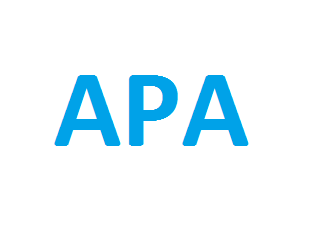
The Academic Perspective Procedia publishes Academic Platform symposiums papers as three volumes in a year. DOI number is given to all of our papers.
Publisher : Academic Perspective
Journal DOI : 10.33793/acperpro
Journal eISSN : 2667-5862
YANGIN AFETLERİNDE ULAŞIM SORUNLARININ ANALİZ EDİLMESİ İÇİN TWITTER VERİ SETİ KULLANILMASI
Abstract
Sosyal medya, afetle ilgili bilgilerin bölgede yaşayanlara ulaştırılması adına önemli ve açık bir veri mecrası haline gelmiştir. Bu mecradaki verileri analiz etmek, afetle mücadele verimliliğini artırmak için önemlidir. Bu çalışma, yangın afetlerinde Twitter kullanıcılarının tutumlarını, ulaşım ve trafik yönünden araştırmaya ve afet müdahalesi sırasında kullanıcıların tahliye durumlarını analiz etmeye odaklanarak bu boşluğu doldurmayı amaçlamaktadır. Bu çalışmada, Twitter’ın geliştiricilere açık veri portalı (API) kullanılarak sunduğu tarih, konum ve anahtar kelimelerle sınırlandırılmış kodlarla verilerin çekilmesi ve analiz edilmesi esas alınmıştır. Veriler, belirlenen bölgelerde ve afet tarihlerinde ulaşım ve trafik açısından paylaşılan içerikleri, yerelde çekilen zorlukları ve olası önerileri analiz edilerek, yerel ve ulusal karar verici ve afet yöneticilerinin olası afetlere karşı hazırlıklı olmalarını destekleyecek öneriler sunmaktadır.
References
[1] A. Haro-de-Rosario, A. Sáez-Martín, and M. del Carmen Caba-Pérez, ‘Using social media to enhance citizen engagement with local government: Twitter or Facebook?’, New Media & Society, vol. 20, no. 1, pp. 29–49, Jan. 2018, doi: 10.1177/1461444816645652.
[2] N. Pourebrahim, S. Sultana, J. Edwards, A. Gochanour, and S. Mohanty, ‘Understanding communication dynamics on Twitter during natural disasters: A case study of Hurricane Sandy’, International Journal of Disaster Risk Reduction, vol. 37, p. 101176, Jul. 2019, doi: 10.1016/j.ijdrr.2019.101176.
[3] F. Yuan and R. Liu, ‘Feasibility study of using crowdsourcing to identify critical affected areas for rapid damage assessment: Hurricane Matthew case study’, International Journal of Disaster Risk Reduction, vol. 28, pp. 758–767, Jun. 2018, doi: 10.1016/j.ijdrr.2018.02.003.
[4] H. M. Saleem, Y. Xu, and D. Ruths, ‘Novel Situational Information in Mass Emergencies: What does Twitter Provide?’, Procedia Engineering, vol. 78, pp. 155–164, 2014, doi: 10.1016/j.proeng.2014.07.052.
[5] S. V. Ukkusuri, X. Zhan, A. M. Sadri, and Q. Ye, ‘Use of Social Media Data to Explore Crisis Informatics: Study of 2013 Oklahoma Tornado’, Transportation Research Record, vol. 2459, no. 1, pp. 110–118, Jan. 2014, doi: 10.3141/2459-13.
[6] A. Joshi and M. Aoki, ‘The role of social capital and public policy in disaster recovery: A case study of Tamil Nadu State, India’, International Journal of Disaster Risk Reduction, vol. 7, pp. 100–108, Mar. 2014, doi: 10.1016/j.ijdrr.2013.09.004.
[7] D. Bennett, ‘Emergency preparedness collaboration on Twitter’, JEM, vol. 16, no. 3, p. 191, May 2018, doi: 10.5055/jem.2018.0368.
[8] M. C. Stewart and B. Gail Wilson, ‘The dynamic role of social media during Hurricane #Sandy: An introduction of the STREMII model to weather the storm of the crisis lifecycle’, Computers in Human Behavior, vol. 54, pp. 639–646, Jan. 2016, doi: 10.1016/j.chb.2015.07.009.
[9] S. Muralidharan, L. Rasmussen, D. Patterson, and J.-H. Shin, ‘Hope for Haiti: An analysis of Facebook and Twitter usage during the earthquake relief efforts’, Public Relations Review, vol. 37, no. 2, pp. 175–177, Jun. 2011, doi: 10.1016/j.pubrev.2011.01.010.
[10] J.-Y. Jung and M. Moro, ‘Multi-level functionality of social media in the aftermath of the Great East Japan Earthquake’, Disasters, vol. 38, no. s2, pp. s123–s143, Jul. 2014, doi: 10.1111/disa.12071.
[11] J. N. Sutton, L. Palen, and I. Shklovski, ‘Backchannels on the Front Lines: Emergency Uses of Social Media in the 2007 Southern California Wildfires’, 2008.
[12] K. K. Scott and N. A. Errett, ‘Content, Accessibility, and Dissemination of Disaster Information via Social Media During the 2016 Louisiana Floods’, Journal of Public Health Management and Practice, vol. 24, no. 4, pp. 370–379, Jul. 2018, doi: 10.1097/PHH.0000000000000708.
[13] L. Zou et al., ‘Social and geographical disparities in Twitter use during Hurricane Harvey’, International Journal of Digital Earth, vol. 12, no. 11, pp. 1300–1318, Nov. 2019, doi: 10.1080/17538947.2018.1545878.
[14] J. Kim, J. Bae, and M. Hastak, ‘Emergency information diffusion on online social media during storm Cindy in U.S.’, International Journal of Information Management, vol. 40, pp. 153–165, Jun. 2018, doi: 10.1016/j.ijinfomgt.2018.02.003.
[15] J. R. Ragini, P. M. R. Anand, and V. Bhaskar, ‘Big data analytics for disaster response and recovery through sentiment analysis’, International Journal of Information Management, vol. 42, pp. 13–24, Oct. 2018, doi: 10.1016/j.ijinfomgt.2018.05.004.
Cite
-
 %0 Academic Perspective Procedia (ACPERPRO) YANGIN AFETLERİNDE ULAŞIM SORUNLARININ ANALİZ EDİLMESİ İÇİN TWITTER VERİ SETİ KULLANILMASI% A Süleyman Nurullah Adahi ŞAHİN , Abdulkadir ÖZDEN% T YANGIN AFETLERİNDE ULAŞIM SORUNLARININ ANALİZ EDİLMESİ İÇİN TWITTER VERİ SETİ KULLANILMASI% D 11/1/2022% J Academic Perspective Procedia (ACPERPRO)% P 37-45 % V 5% N 2% R doi: 10.33793/acperpro.05.02.1298% U 10.33793/acperpro.05.02.1298
%0 Academic Perspective Procedia (ACPERPRO) YANGIN AFETLERİNDE ULAŞIM SORUNLARININ ANALİZ EDİLMESİ İÇİN TWITTER VERİ SETİ KULLANILMASI% A Süleyman Nurullah Adahi ŞAHİN , Abdulkadir ÖZDEN% T YANGIN AFETLERİNDE ULAŞIM SORUNLARININ ANALİZ EDİLMESİ İÇİN TWITTER VERİ SETİ KULLANILMASI% D 11/1/2022% J Academic Perspective Procedia (ACPERPRO)% P 37-45 % V 5% N 2% R doi: 10.33793/acperpro.05.02.1298% U 10.33793/acperpro.05.02.1298




